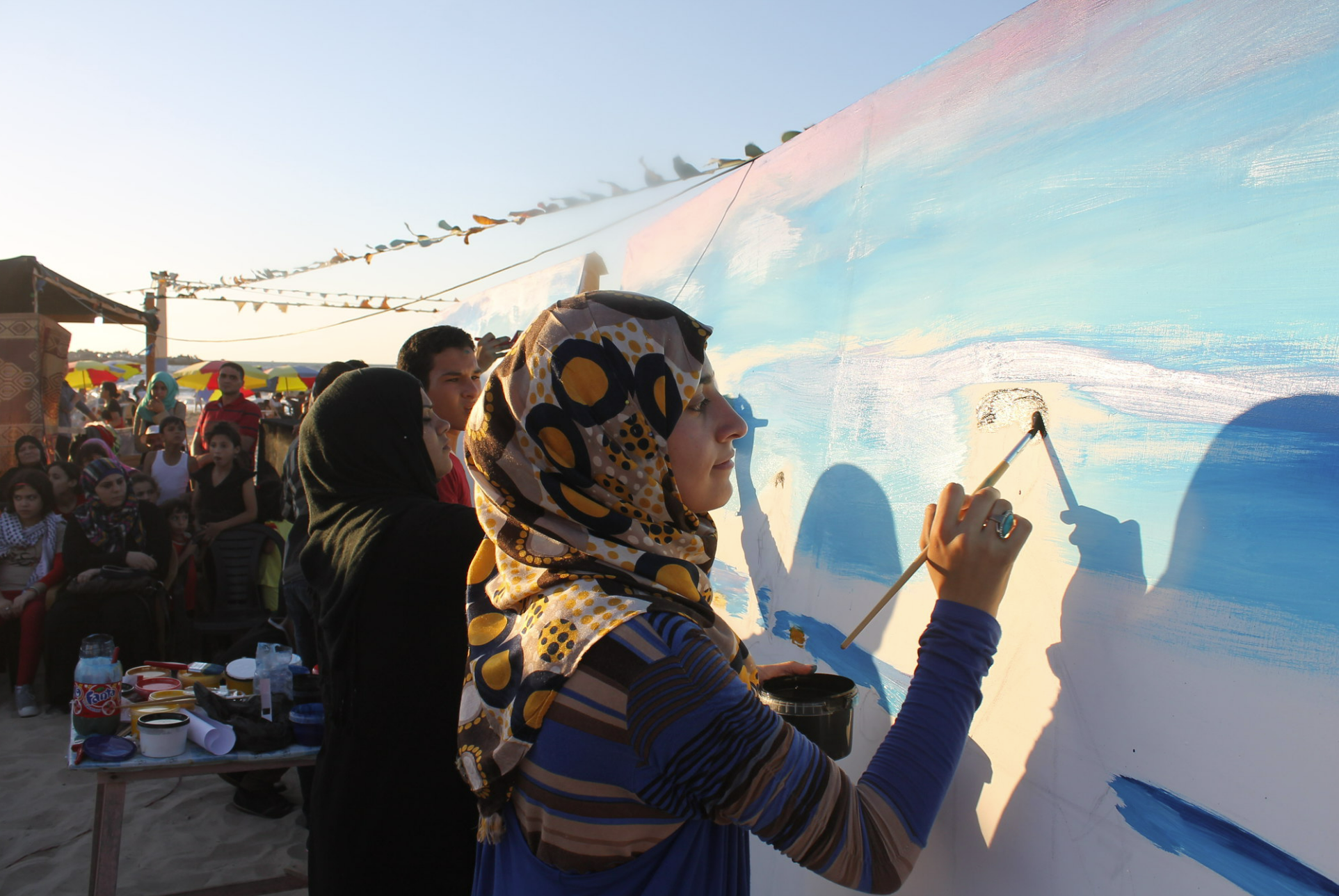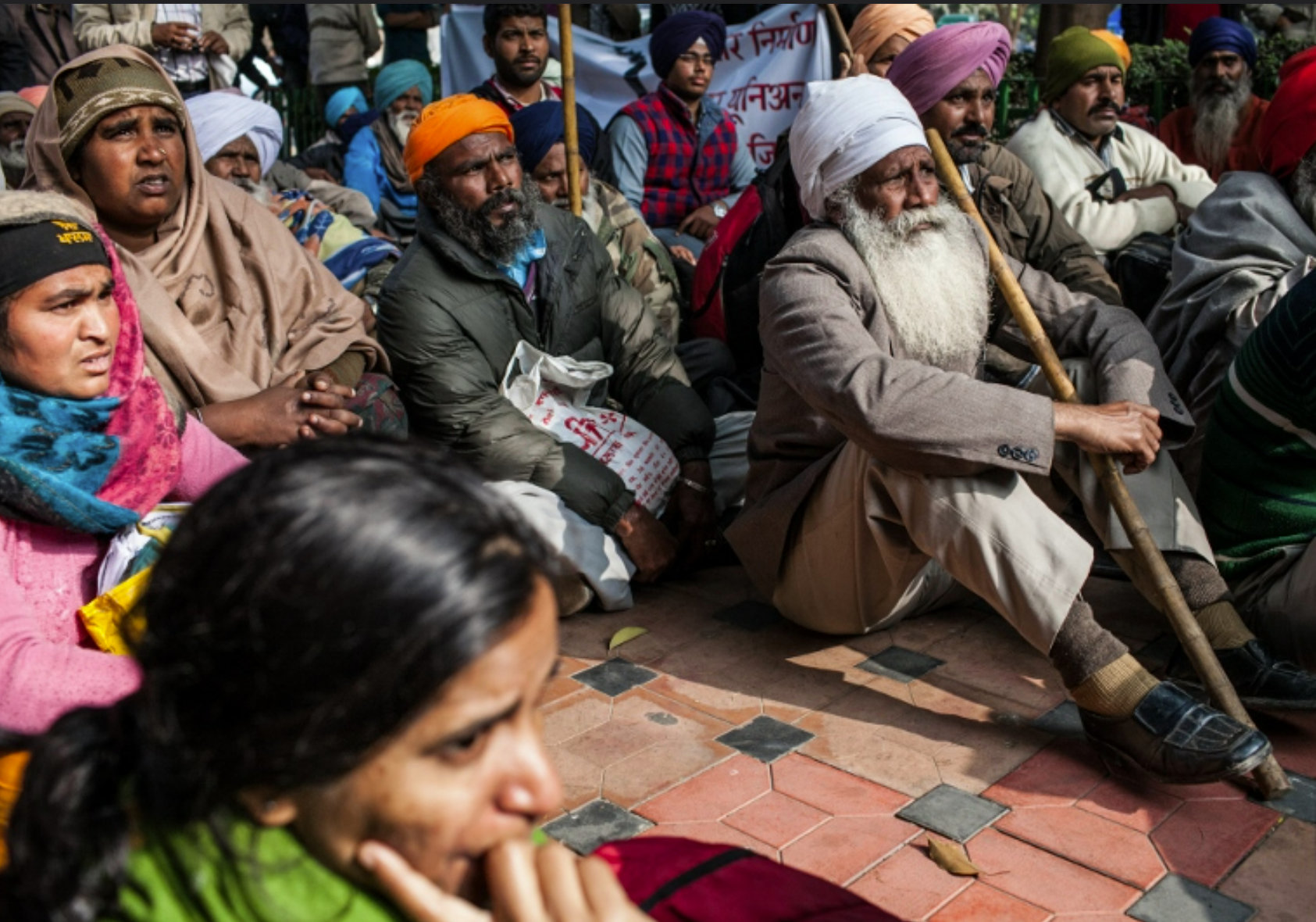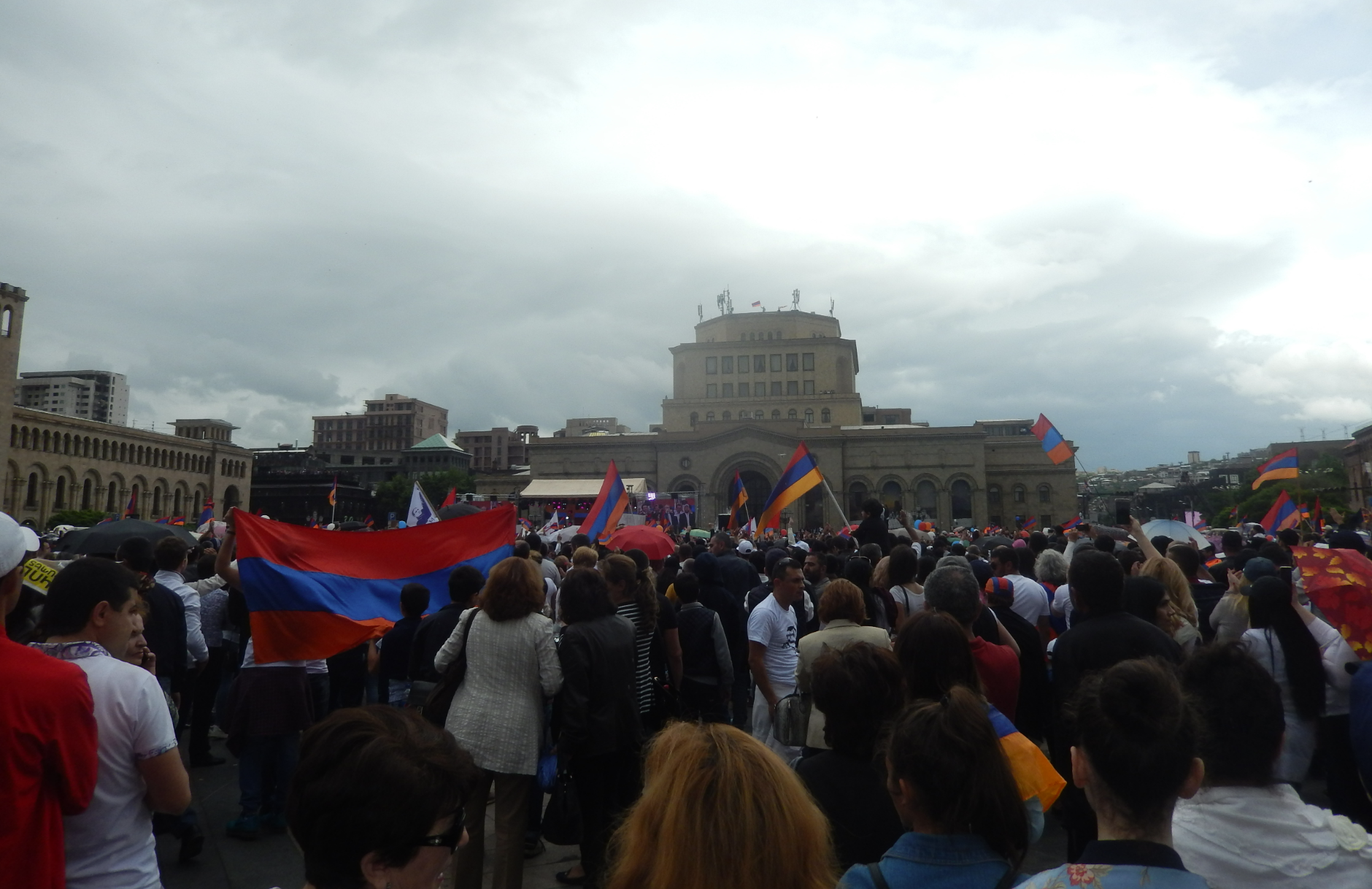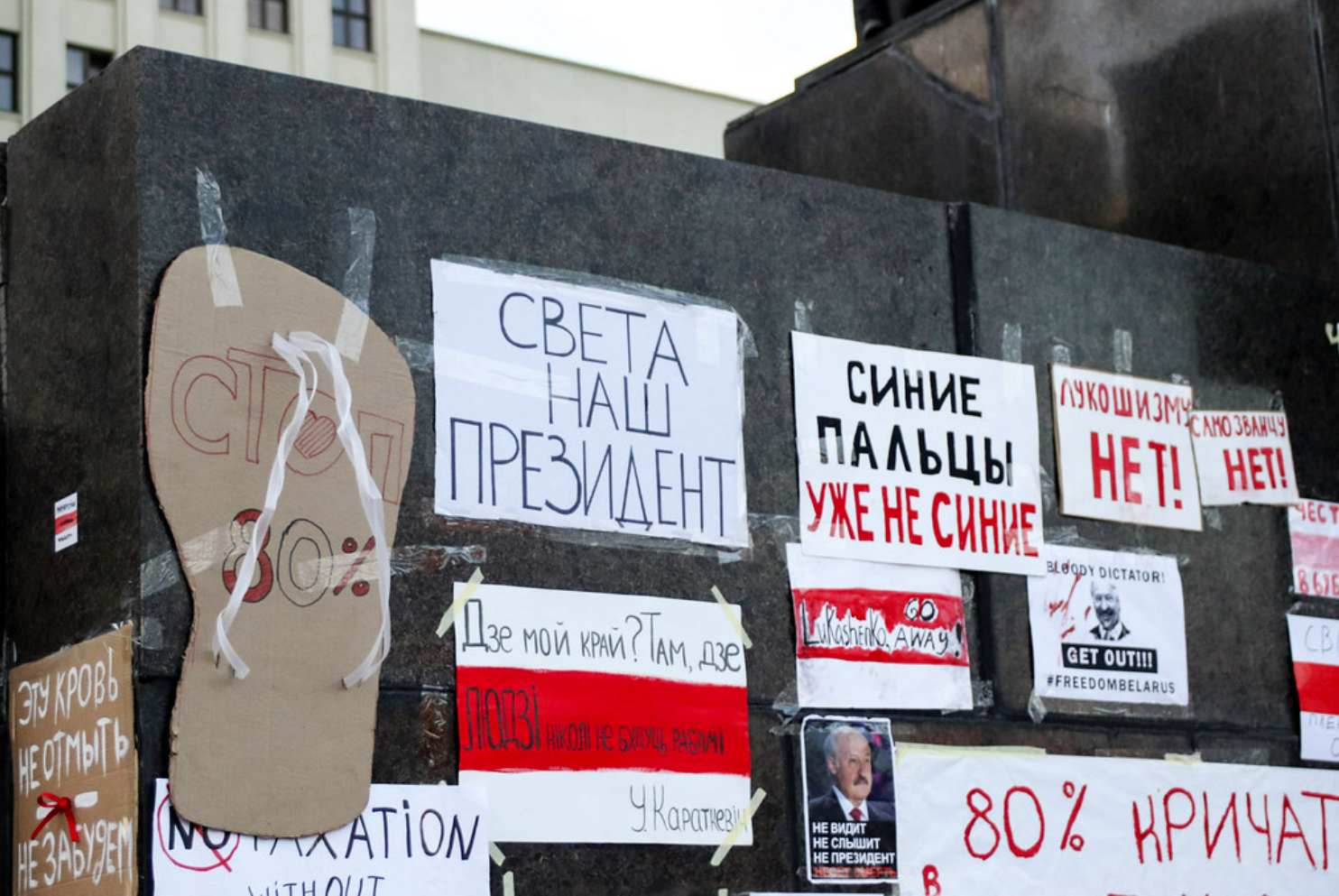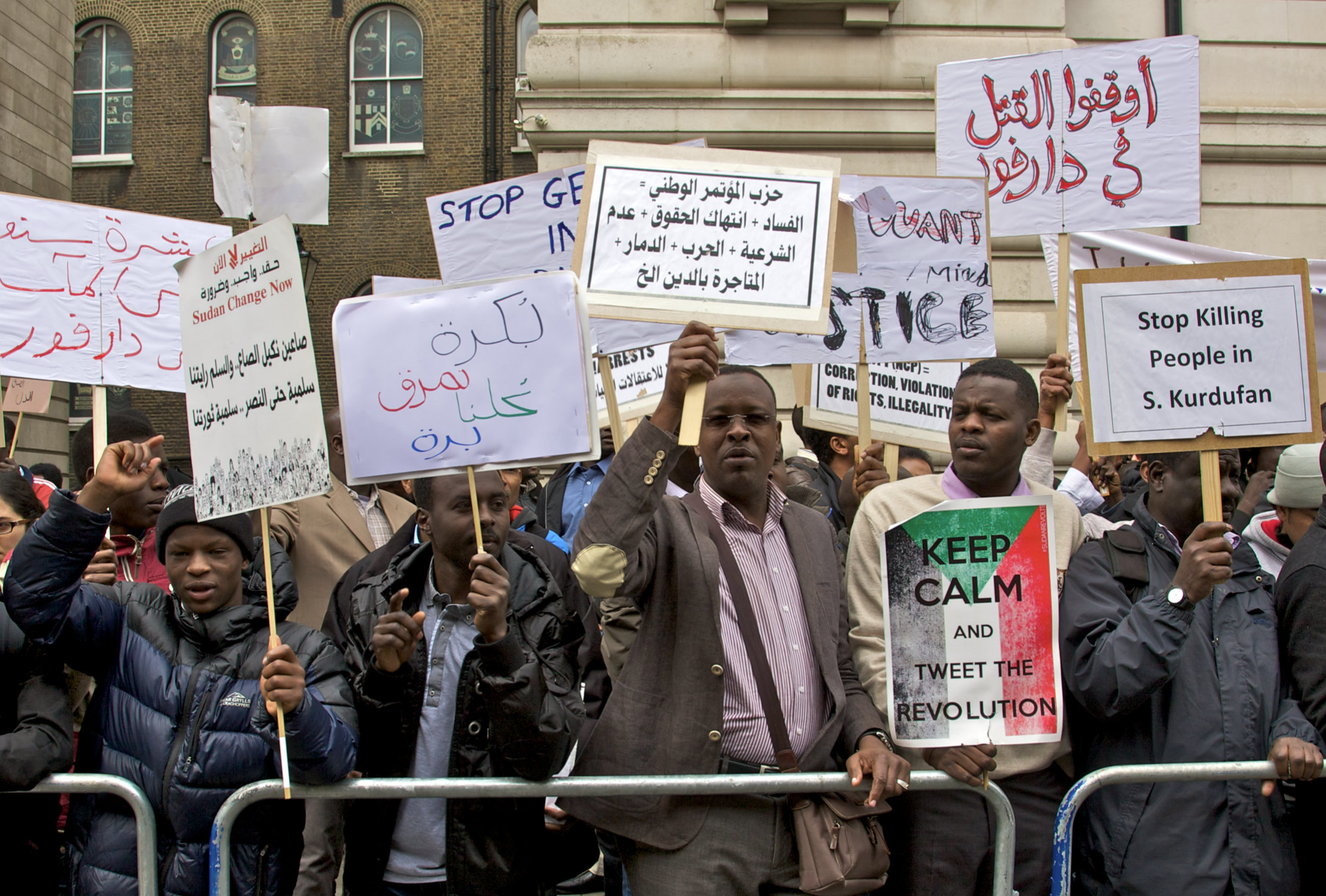From Australia to Bolivia, social movements are paradigms of collective power and triumphs of the human spirit.
Sudanese Protesters Welcome 'Positive Steps' Taken By Ruling Military Council, demonstrators rally near the military headquarters in Khartoum, Sudan, Monday, April 15, 2019. Omer. Public Domain Mark 1.0
It's easy to brush off textbook knowledge as outdated, but academic theories of social movements can provide a powerful lens to understand the changes happening in the world. The 21st-century witnesses social movements erupting all over the world, led by activists fighting to bring about change. Sociologists categorize social movements as a form of collective behavior that emerges during the political, cultural, or economic upheaval. It is precisely this decentralization that gives activists immense power to effect change, leading the masses in protest against the upper crust. With that in mind, below is a list of nine groundbreaking social movements of the 21st century that you might have missed.
1. Equality Australia, Australia
Reason Party (Australia) supporters with placards at Yes Marriage Equality rally Sydney Town Hall 10 Sept 2017.Robert.CC BY-SA 4.0.
Despite progress in other western countries, Australia still faces criticism for a dearth of LGPTQ representation in politics. For example, in 2021, the Australian government under Scott Morrison almost passed a deceptively named religious discrimination bill that in reality had the potential to legalize discrimination based on sex, disability, and age under the disguise of religious freedom. This bill not only undermines the rights of the LGBTQ community but also perpetuates stereotypes and biases. The bill was shelved after religious lobby groups withdrew support and, due to Scott Morrison’s defeat to the Australian Labor Party in 2022, seems unlikely to be reintroduced.
To compensate for the lack of legal protection for the sexual minority population, Equality Australia, an organization dedicated to improving the lives and circumstances of the LGBTQ community in Australia, has launched multiple initiatives. It tackles the pressing issues that gay, trans and queer Australians face, from being able to freely express their identity to receiving adequate healthcare and support.
2. “Great March of Return” Protests, Palestine
Child survivors of Israeli massacres gather on the Gaza beach to finish an incomplete match.Catron.CC BY-NC 2.0.
In the Gaza Strip, a Palestinian exclave on the eastern coast of the Mediterranean Sea, 70% of the population are refugees suffering from the blockade by the Israeli military occupation. Essential needs like electricity, sanitation, and healthcare are a luxury for these refugees, who live constantly under the shadow of military clashes between Hamas and Israel.
The Great March of Return demonstrations (GMR), which began on March 30, 2018, brought a glimmer of hope to the Palestinian refugees in the Gaza Strip. The GMR was a call to end the Israeli blockade and the right of return for Palestinian refugees through non-violent protest at the Gaza border.
But while most refugees marched peacefully, Israeli forces have taken a brutal toll, killing at least 210 Palestinians and injuring over 18,000 since 2018, according to Gaza health officials. The aftermath of these marches has left many with life-long physical and psychological scars from generation to generation. A staggering 80% of all children treated by the United Nations Relief and Works Agency for Palestine Refugees in the Near East were injured by gunshot wounds. In contrast to the aggressive response from Israel, the largely nonviolent Great March of Return “restored credence to the concept of peaceful struggle”, according to Palestinian journalist and peace activist Ahmed Abu Artema.
3. EndSARS, Nigeria
Protesters at the endSARS protest in Lagos, Nigeria 92. CC BY-SA 4.0.
Nigeria's history of police brutality and unjust criminal investigations reached a boiling point in 2020 when the world was shocked by a viral video of two men being dragged out of a hotel and shot by members of the Special Anti-Robbery Squad (SARS). Despite being established in 1992 to arrest and prosecute those involved in violent crimes, SARS quickly became known for its human rights violations, including arbitrary detention, torture, extortion, and murder.
As the hashtag “EndSARS” quickly spread across social media, fueled by the support of high-profile celebrities like footballer Marcus Rashford and actor John Boyega, the movement transitioned from an online trend to a physical reality. Peaceful protests erupted in cities across Nigeria, from capital Abuja to metropolis Lagos, and in major centers like Ibadan and Osun, as the people took to the streets to demand an end to the police brutality and human rights violations. Though the Nigerian authorities made empty promises to disband SARS, the movement continues to fight for justice and accountability to this day.
4. India's Farmer Protest, India
Protests outside Odisha Bhawan New Delhi. Brick. CC BY-NC-SA 2.0.
In September 2020, as the pandemic and economic woes plagued the country, the Indian government passed three farm acts that many farmers regard as a breakdown of the existing, stable relationship with agricultural small businessmen.
The farmers were furious and took to the streets, shutting down railways, taking over highways, and protesting en masse in Delhi, Punjab, Haryana, and Western Uttar Pradesh to demand change. On Nov 26, 2020, millions struck in Delhi, calling for a change in labor laws, but were met with violence and teargas. The protests coincided with the Covid outbreak, leading some to view the government's social distancing requirement as a conspiracy to shut down its critics.
After ten rounds of talks, the government agreed to grant farmers’ unions a rare concession in January 2021, with the Prime Minister allowing the repeal of the controversial reform due to public pressure. The Indian farmer protest highlighted the deep frustration with the government's handling of the agriculture sector, which 60% of rural households depend on for their livelihoods.
5. Subway Fare Protests, Chile
Students take part in violent Protests in Santiago de Chile. C64-92. CC BY 2.0.
In Chile, a tiny $0.0 was all it took to ignite social upheaval in 2019. What started as a protest over a 30 peso, equivalent to $0.04, exposed the massive wealth inequality in the country, where the per capita income of the bottom quintile is $140 a month.
During the height of the protests, high school students started to overrun the turnstiles, using the hashtag “Mass Evasion” on social media to encourage others to join the cause. The young protesters soon joined in mass demonstrations by many other Chileans who are frustrated with rising living costs, low wages, and an inadequate education system.
The protests and counterforce led to the death of at least 18 civilians, the burndown of 21 metro stations, and the destruction of several trains, buses, and buildings, including 200 supermarkets. Eventually Chile’s militarized national police managed to suppress the October riots, but the protests and their aftermath shed light on the ongoing fight against wealth inequality in Chile.
6. Velvet Revolution, Armenia
Velvet Revolution in Armenia. Armineaghayan.CC BY-SA 4.0.
The Velvet Revolution, otherwise known as the “Reject Serzh” civic initiative, is the archetype of a social movement that succeeded in overthrowing an entire regime without a single bullet fired. In 2018, the protest called for the removal of former President Serzh Sargsyan from his third consecutive term. Sargsyan took office as president in 2008, following a violent suppression of anti-government protests in which at least 10 people were killed. A youth movement was established soon after, contributing to the formation of current Prime Minister Nikol Pashinyan’s Civil Contract party.
This peaceful protest was politically motivated, with support from human rights advocates, journalists, and information organizations. The demonstration started on March 18, 2018 when Pashinyan began his protest walk in Gyumri. It reached the peak when over 250,000 protesters gathered in Republic Square for the largest demonstration in Armenia's post-Soviet independence period. The movement was able to unite all Armenians regardless of political views and sparked hope for a lasting democratic government.
7. “Slipper uprising”, Belarus
Protests in Minsk, Belarus. Shnipelson. CC0 1.0.
The “Slipper Uprising” broke out in Belarus in 2021, as protesters used the simple yet powerful symbol of a slipper to push for change. The series of protests followed a controversial presidential election that declared Alexander Lukashenko, the incumbent Belarusian President, as the winner.
The call, “stop the cockroach” came from popular blogger Sergei Tikhanovsky's video, in which an elderly woman compared Lukashenko to the main character of the children’s poem “The Mighty Cockroach.” This nickname, combined with opposition supporters’ demand for Lukashenko's resignation, fueled mass protests in the streets.
Demonstrators showed their defiance against Lukashenko’s rule by waving slippers high in the air. Over 360 people were taken into custody for protesting in just one weekend, but the fire of dissent continued to burn. The “Slipper uprising” proved that even the simplest of symbols can be a catalyst for change.
8. Wildfire protest, Bolivia
March in favor of Evo Morales. Santiago Sito.CC BY-NC-ND 2.0.
The heat is on in Bolivia as hundreds of thousands of protesters took to the streets to voice their outrage over President Evo Morales’ government's response to the wildfires that ravaged the country’s forests in October 2019.
Many of the protesters were residents of Santa Cruz, Bolivia's largest city and home to vast areas of the biodiverse Chiquitano dry forests. Protesters called for a “punishment vote” against Morales in the upcoming presidential election. The rallies have drawn massive crowds, with an estimated 350,000 people marching through Santa Cruz in late October, according to reporting from Reuters. The growing public anger and frustration highlight the urgent need for action to address environmental justice and protect the country's precious forests.
9. “Million-man March”, Sudan
Demonstrators hold placards against the Khartoum regime, April 28, 2013. Sari Omer. Public Domain Mark 1.0.
Sudan’s "Marches of the Millions" was a massive demonstration held in the capital city of Khartoum on June 30, 2019. The nationwide protests were orchestrated by the Sudanese Professional Association (SPA), an influential activist coalition. The protesters had six demands, including a swift transfer of power to a civilian government and aid to the victims of government-initiated attacks.
The nationwide protest also exposed the danger of police crackdown, as national security agencies used violent tactics, such as teargas, to confront the marching citizens. Despite the violence, the protest movement continued, leading to the agreement between the military and its opposition in August 2019. The agreement marked the first step towards a democratic transition for Sudan.
From trending hashtags and posts that amplify the voice of activism on social media, to throngs of individuals marching in the streets and rallying for a shared goal, social movements embody the spirit of resistance against oppression and tyranny. It is through the eruptive energy of collective action that humans can truly exhibit their strength and determination in the face of injustice.
Hope Zhu
Hope is a Chinese international student at Wake Forest University in North Carolina studying sociology, statistics, and journalism. She dreams of traveling around the globe as a freelance reporter while touching on a wide range of social issues from education inequality to cultural diversity. Passionate about environmental issues and learning about other cultures, she is eager to explore the globe. In her free time, she enjoys cooking Asian cuisine, reading, and theater.



